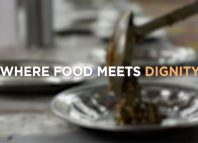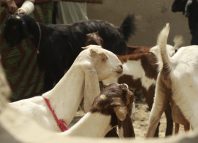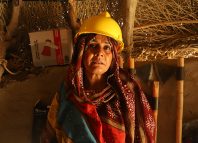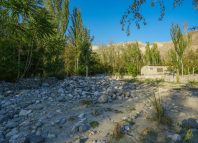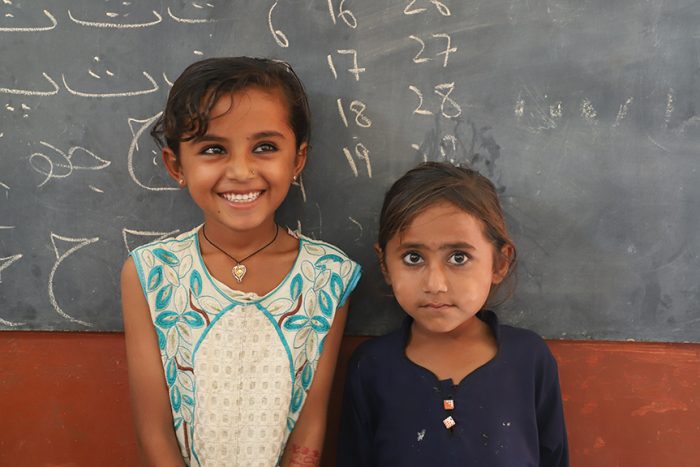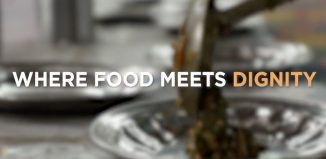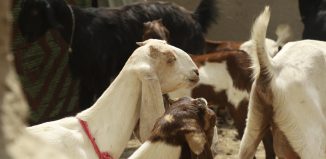A Meal and a Future
Under a shade, steel plates filled with warm, homemade meals wait for the children at around 11:00 AM on a hot summer day. Bananas and apples rest on the side, a rare treat for the students who eagerly gather for lunch. The aroma of freshly cooked roti (flat bread) and mixed vegetables drifts through the air as Soorma, one of the school cooks, ladles food onto each plate. Her daughter, Bhawna, watches eagerly—today’s meal, like every other, means more than just nourishment. It represents a new chapter in the village’s journey towards education and empowerment.
For years, Government Girls’ Primary School Ratnore lay abandoned, its doors closed in 2008, leaving most of the village’s girls without access to education. Ratnore is about 45 kilometres away from the main Umerkot city in Sindh. Cultural and economic barriers, coupled with the ever-present struggle against food insecurity, made it nearly impossible for families to send their daughters to school. However, that changed when Community World Service Asia (CWSA), with the support of Presbyterian World Service & Development (PWS&D), stepped in. By reopening the school and launching a school feeding programme, they not only filled empty stomachs but also rekindled a thirst for learning.
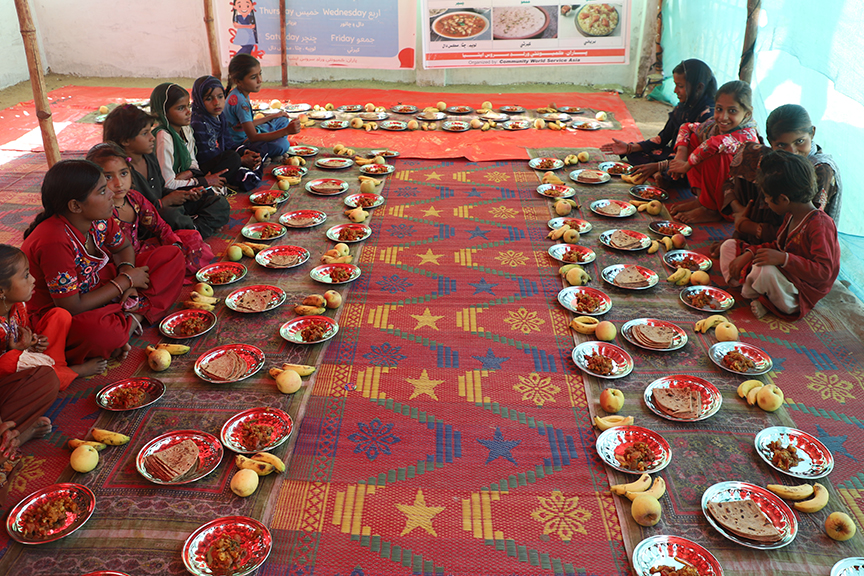
Inside the makeshift school kitchen, Soorma kneads dough, sweat trickling down her forehead in the midday heat. She and another village woman prepare fresh meals daily, a task she wholeheartedly embraces, knowing her daughter and many others will eat well.
“My daughter Bhawna always wanted to study, but there was no school for girls here,” Soorma says, rolling out a roti before tossing it onto the hot griddle. “When the school finally opened, the lunch programme made it easier for us to send her. Now, she is happy, learning English, and dreams of becoming a doctor.”
Bhawna, a bright-eyed eight-year-old, echoes her mother’s pride. “I love coming to school! The food is always delicious, and I want to keep studying,” she says.
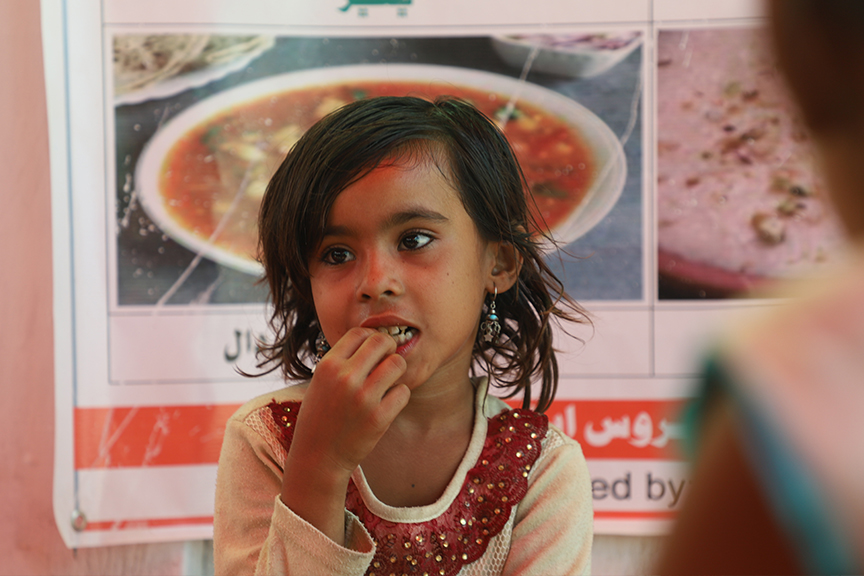
The school feeding programme also includes fresh goat milk every afternoon before lunch. Meena, a local goat owner, arrives early to deliver the milk, a task she has taken upon herself with unwavering commitment. She is among the 30 women from different households of the village who have received goats to support the school. In the evening, the owners use the milk for their families.
“I bring milk for the children every day because I want my daughter and all the other girls to grow up strong and educated,” she says. “Even if my goat’s milk runs out, I borrow some from my neighbours—this is my responsibility.”
For Meena, education is a family mission. Her eldest son is studying to become a doctor, while her younger children are also pursuing school. “We couldn’t study because of poverty,” she says, “but I will do everything I can to give my children a better future.”
Before the school feeding programme, many children had one meal a day or relied on simple meals at home—if lucky. Rabia, a student, recalls a time before school became part of her daily routine.
“When we didn’t attend school, we only had cow’s milk and a few vegetables like guar and chibhar,” she says. “Now, we eat a proper meal every day, and I enjoy studying.”
For her classmates Sapna and Raksha, the change is life-altering. “We come to school happily now, knowing we’ll get a good meal. Our health has improved, and more girls in our village are joining school,” they explain. “And we love biryani which is cooked once a week here and is very tasty!”
The impact extends beyond individual students. From January to December 2024, the project implemented in the Union Councils of Kaplore, Sekhro, and Faqeer Abdullah ensured that 450 students across three schools in Umerkot received nutritious meals. Parents who were once hesitant about sending their daughters to school now feel reassured.
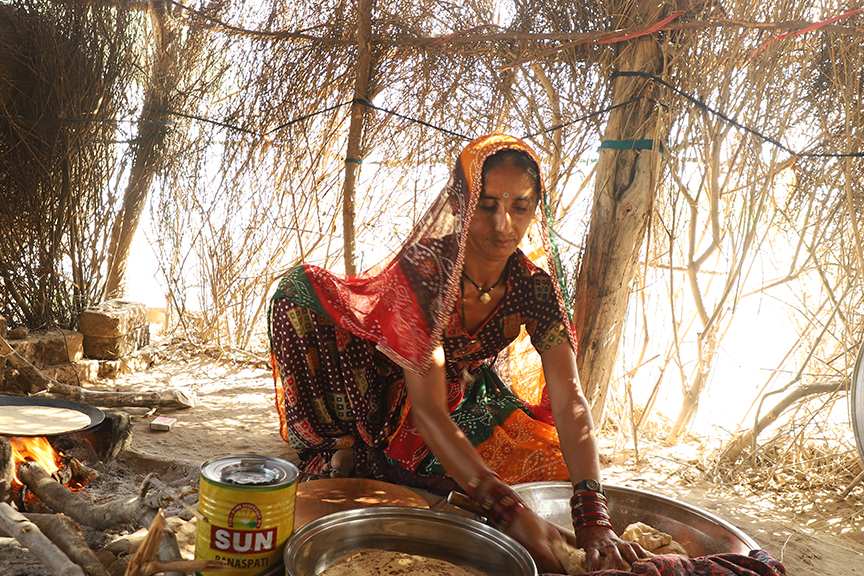
“People in our village didn’t prioritise girls’ education before,” says a Village Management Committee member (VMC) member. “But when CWSA involved us, we offered two community halls to host the school. Now, 1201 girls are enrolled.”
The initiative has also created economic opportunities for local women. Besides Soorma, another village woman Dheli has been employed as a school helper, responsible for serving food and cleaning. The women are incentivised by being paid PKR 25,000 each. Even the government has collaborated—after the school reopened, the District Education Officer (DEO) provided an additional teacher from the village.
For too long, hunger and gender inequality kept girls out of classrooms. But through this programme, education and nutrition have become intertwined, breaking long-standing barriers. The meals provide more than sustenance—they offer a reason to attend school, a chance to dream, and a path toward independence.
As Bhawna finishes her lunch and wipes her hands clean, she runs off to join her friends, ready for the next lesson. In a village where education was once an afterthought for girls, the clang of steel plates and students’ laughter are sounds of change—proof that something as simple as a meal can redefine futures.
- On average, 95 to 100 girls attend the school. However, attendance tends to be lower during the seasonal crop harvesting period. ↩︎

